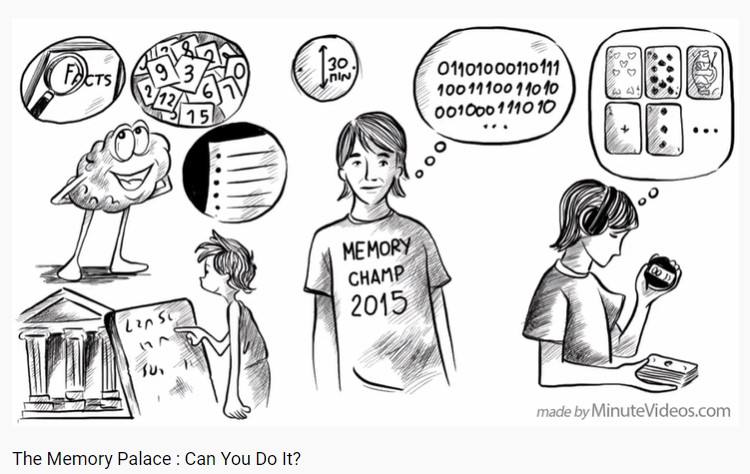How to become a master of memorizing?
Get curious
Students watch a short film about dinosaurs.
- Who do you think is responsible for naming dinosaurs?
- Why do the names sound so strange?
- Can you repeat any of the names you have heard in the film?
Get going
The teacher introduces the students to the issue of memory techniques.
It is often difficult for us to remember new information. There are different ways to help ourselves do it. During today’s lesson you will learn one of them – the memory room.
We will try to transform our classroom into a memory room.
The students choose seven characteristic places or objects (such as the door, the chalkboard, a bookshelf, a lamp, etc.) in the classroom.
The principles of the memory room can be found in the tab.
The students prepare a memory room model.
Working in pairs, they make a paper room model.
The model will consist of an open box and the seven selected characteristic places/objects.
The instructions are available in the tab.

In pairs, the students play a memory game using their models.

One of the students places seven out of ten objects on memory traces.

The second person, following the memory traces from 1 to 7, tries to memorize the objects within five seconds. Next, that person turns his or her back on the model and brings all the memorized objects to mind in turn.
The first player checks whether the items have been memorized correctly.
Next, the participants gather all the objects and change their roles. The second player changes the selection and arrangement of the objects in the memory room model.
The teacher summarizes the game with the students.
- How many objects have you managed to memorize?
- What has helped and what has hindered this task?
The teacher presents the principles of the memory room.
The students use the memory room technique to memorize the names of seven dinosaurs.
Ankylosaurus,
Archaeopteryks,
Diplodokus,
Iguanodon,
Stegosaurus,
Triceratops,
Tyrannosaurus
The teacher can use the presentation provided in the tab.
Older students (proficient in reading and writing) write down individual names on the small sheets of paper and place them on the traces in the memory room.
Younger students (who are not able to read and write fluently) draw simple drawings of particular dinosaurs and place them on the memory traces.

At the same time, the students try to memorize all the names and associate each one with the appearance of a corresponding dinosaur.


Finally, the teacher asks volunteers to come up to the front of the classroom and tell others what they have managed to memorize.
The other students may ask additional questions, for example:
What does a stegosaurus look like?
Which of the dinosaurs has a long neck?
Get practicing
The students transfer their memory rooms into their imagination.
Spinosaurus
Brachiosaurus
Styracosaurus
Gigantosaurus
Sauropelta
Ornithomimus
Allosaurus
The teacher can use the presentation provided in the tab.
The student (or students) who has (have) memorized the greatest number of names is awarded a printout showing the largest dinosaur to have ever lived on Earth (the image to print is provided in the tab).

